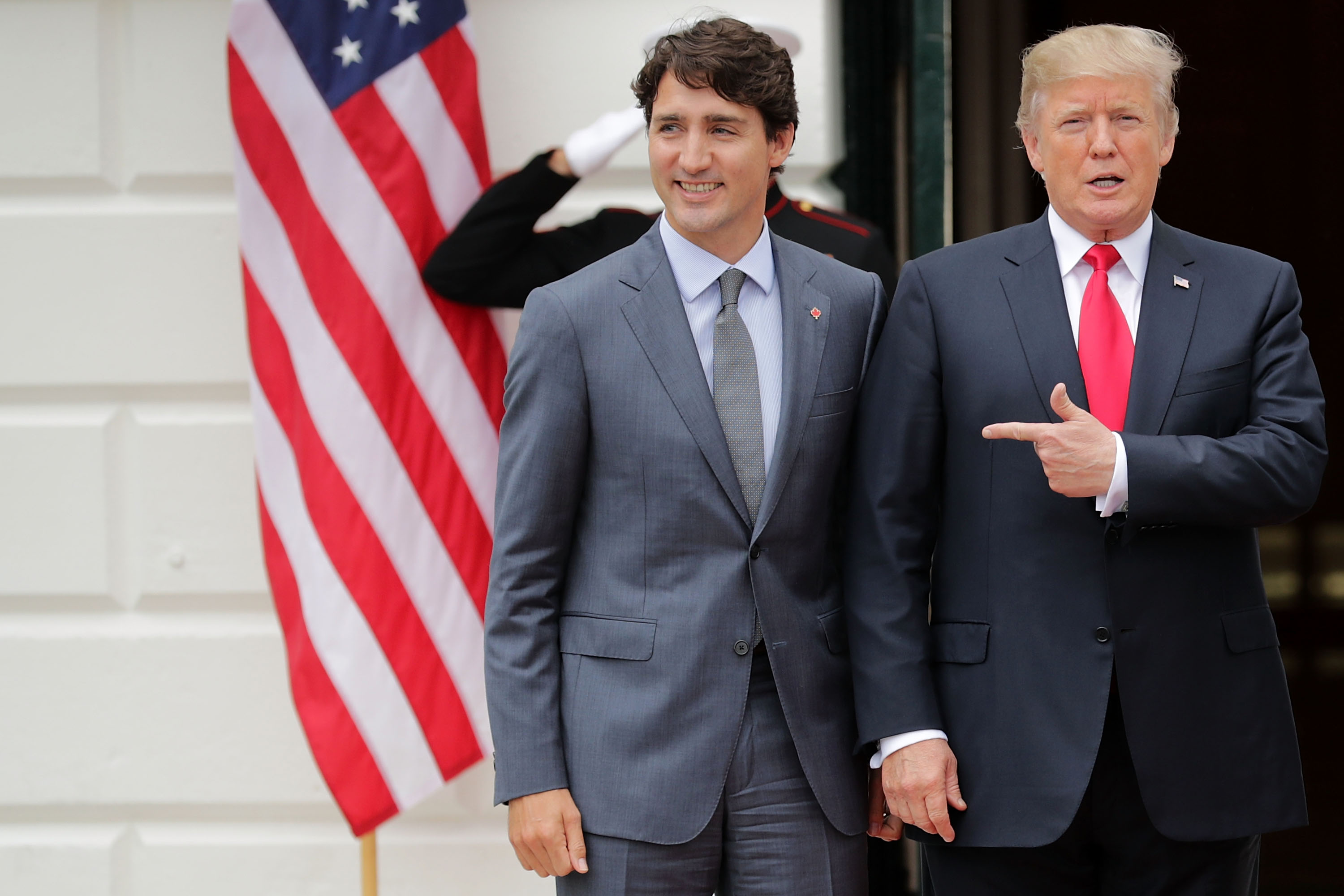NAFTA Talks Hit One-Year Mark as Trump Keeps Canada Hanging
Mexican officials are in D.C. this week amid push for bilateral agreement

Top U.S. and Mexican negotiators are meeting this week in the latest effort to finish a bilateral trade agreement amid unanswered questions about the future of the North American Free Trade Agreement on the first anniversary of the Trump administration’s launching of negotiations to revamp the 1994 trade pact.
Ildefonso Guajardo Villarreal, secretary of the economy, made a late afternoon arrival at the office of U.S. Trade Representative Robert Lighthizer on Wednesday. Guajardo is leading a Mexican delegation comprised of negotiators from the current administration and a transition team from the new administration that takes office in December.
Guajardo told reporters that although he is focused on the Mexico-U.S. talks, he remains hopeful there will be negotiations involving all three NAFTA partners.
In recent comments, Trump administration officials have said NAFTA could remain a trilateral deal with an overall agreement among the U.S., Mexico and Canada. But for now, President Donald Trump and Lighthizer say talks with Mexico are more promising than those with Canada.
But Senate Finance Chairman Orrin G. Hatch said in a statement that the deal should in the end include the three countries.
“Canada and Mexico have been strong U.S. allies, and NAFTA has benefited millions of American farmers, ranchers and entrepreneurs,” he said. “We all agree it’s time to bring this trade deal into the 21st century, but even if some elements of agreement are negotiated bilaterally, my expectation is ultimately a trilateral agreement that meets the high standards of Trade Promotion Authority and gains the support of Congress.”
In early August, Oregon Sen. Ron Wyden, the top Democrat on the committee, said the administration outlined its negotiating objectives for a three-country agreement to the congressional trade committees in May 2017 under the Trade Promotion Act. If the administration changes its goal to a one-on-one agreement with Mexico, officials will have consult with Congress, Wyden said.
“This is not a, hey, they can do it if the feel like it. They are required by law [to consult with Congress],” he said.
When the first round of NAFTA renegotiations began on Aug. 16, 2017, Mexico was the trading partner under pressure from the Trump administration. Trump had directed most of his ire at Mexico because the U.S. carries an average $60 billion annual trade deficit with its southern neighbor.
The administration said it expected negotiations to be concluded within months. But talks bogged down over several U.S. proposals, such as a provision that would allow any one of the three countries to walk away from NAFTA after five years, and a provision to make optional the investor-state dispute settlement process that allows corporations to use private, three-person arbitration panels to seek monetary damages for a country’s policies or laws they say affect their bottom line.
Trump, Lighthizer and Agriculture Secretary Sonny Perdue have publicly criticized Canada as uncooperative on U.S. proposals such as opening its dairy market to U.S. exports.
Canadian Prime Minister Justin Trudeau remained adamant earlier this week in an interview with Canadian broadcast network CBC that his government will not agree to ending the country’s supply management system that limits egg, poultry and dairy imports. “Absolutely not,” Trudeau told an interviewer.
Tensions between Canada and the U.S. also rose June 1 when the U.S. ended an exemption for Canada, Mexico and the European Union from 25 percent steel and 10 percent aluminum tariffs imposed for national security reasons under Section 232 of the Trade Expansion Act of 1962. The Trump administration had excluded the countries from global tariffs on the imports after concluding that the use of foreign-made steel and aluminum made the U.S. dependent on imports and posed an economic threat to domestic steel and aluminum manufacturers.
The end of the tariff exclusions strained relationships with Canada, Mexico and the EU, which responded with retaliatory tariffs on selected U.S. goods. Lighthizer has said the steel and aluminum tariffs will be part of the NAFTA talks with Canada and Mexico.
In late July, Lighthizer told the Senate Commerce-Justice-Science Appropriations Subcommittee that the U.S. was working toward an agreement in principle with Mexico that could be signed by current President Enrique Pena Nieto before he leaves office Dec. 1. For the U.S. to move the agreement under Trade Promotion Authority, Lighthizer said USTR needs to have it ready by the end of August.
At the Senate hearing, it was unclear how far-reaching a preliminary agreement with Mexico could be. But Sen. Lamar Alexander warned against including a sunset provision in a final NAFTA pact.
“There are a substantial number of Republicans, including me, who are not likely to vote for any new NAFTA agreement that includes a sunset clause because we don’t think it’s worth anything,” the Tennessee Republican said.
Also Watch: Pence Outlines Need for U.S. Space Force, Says Space No Longer Peaceful





